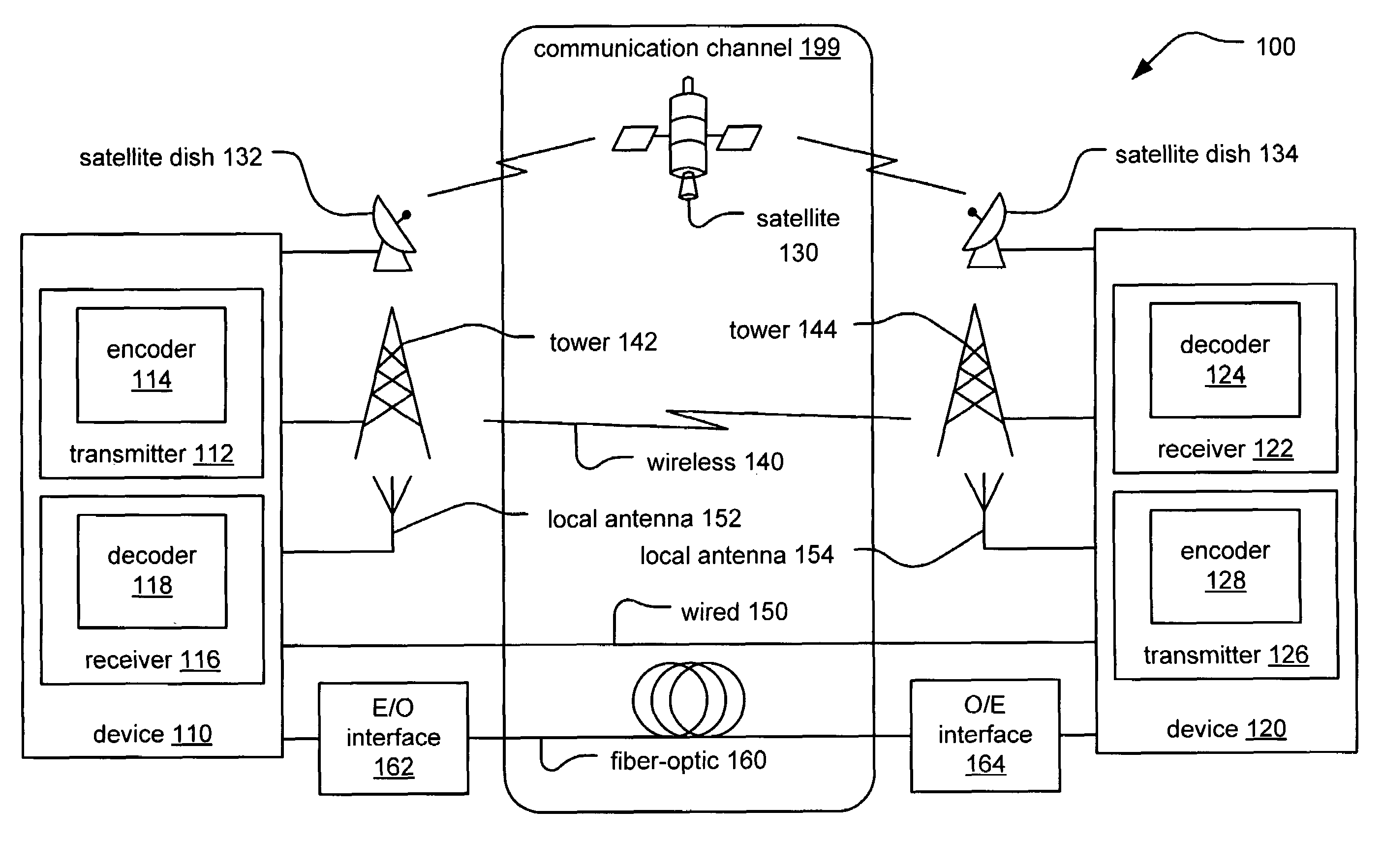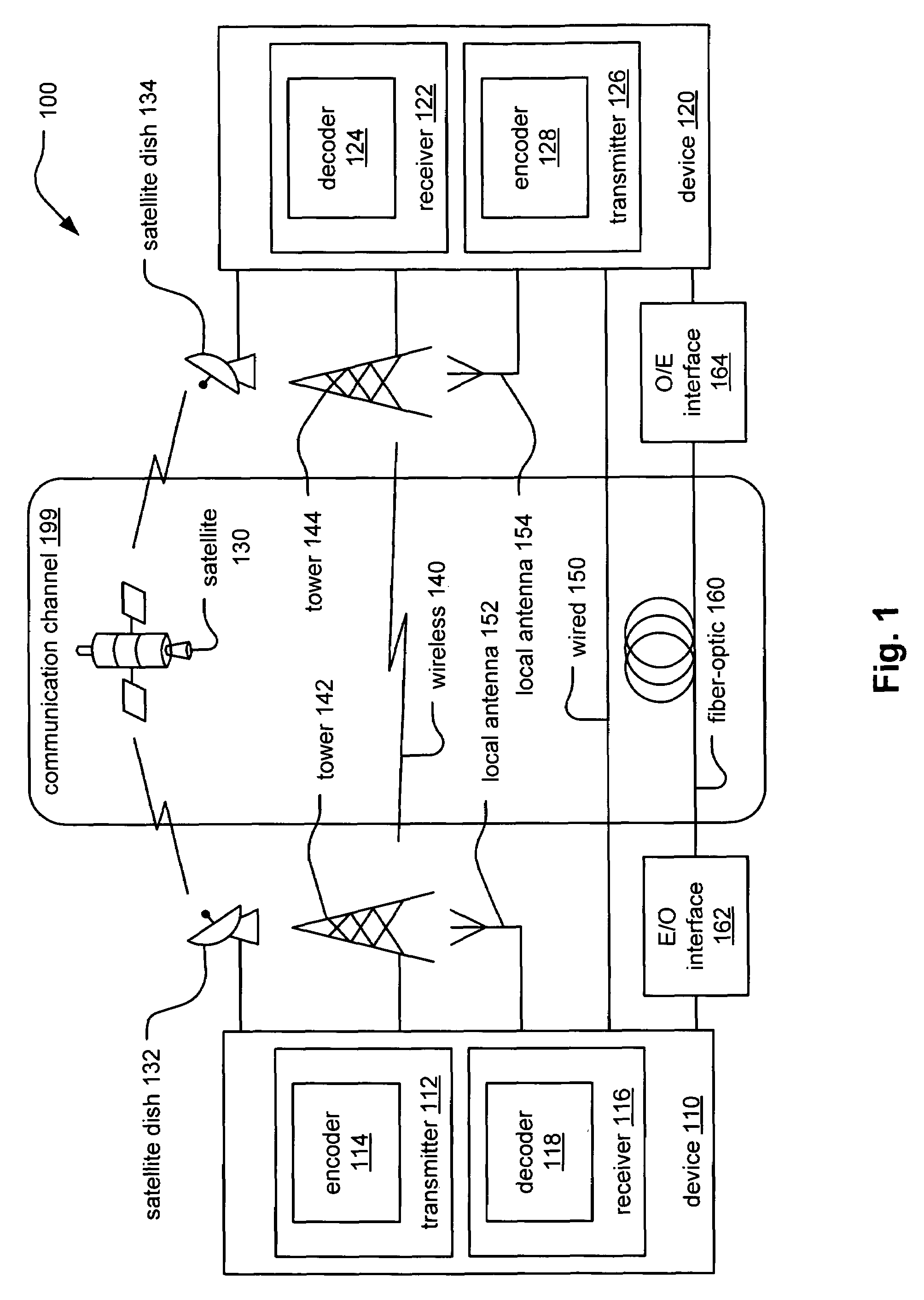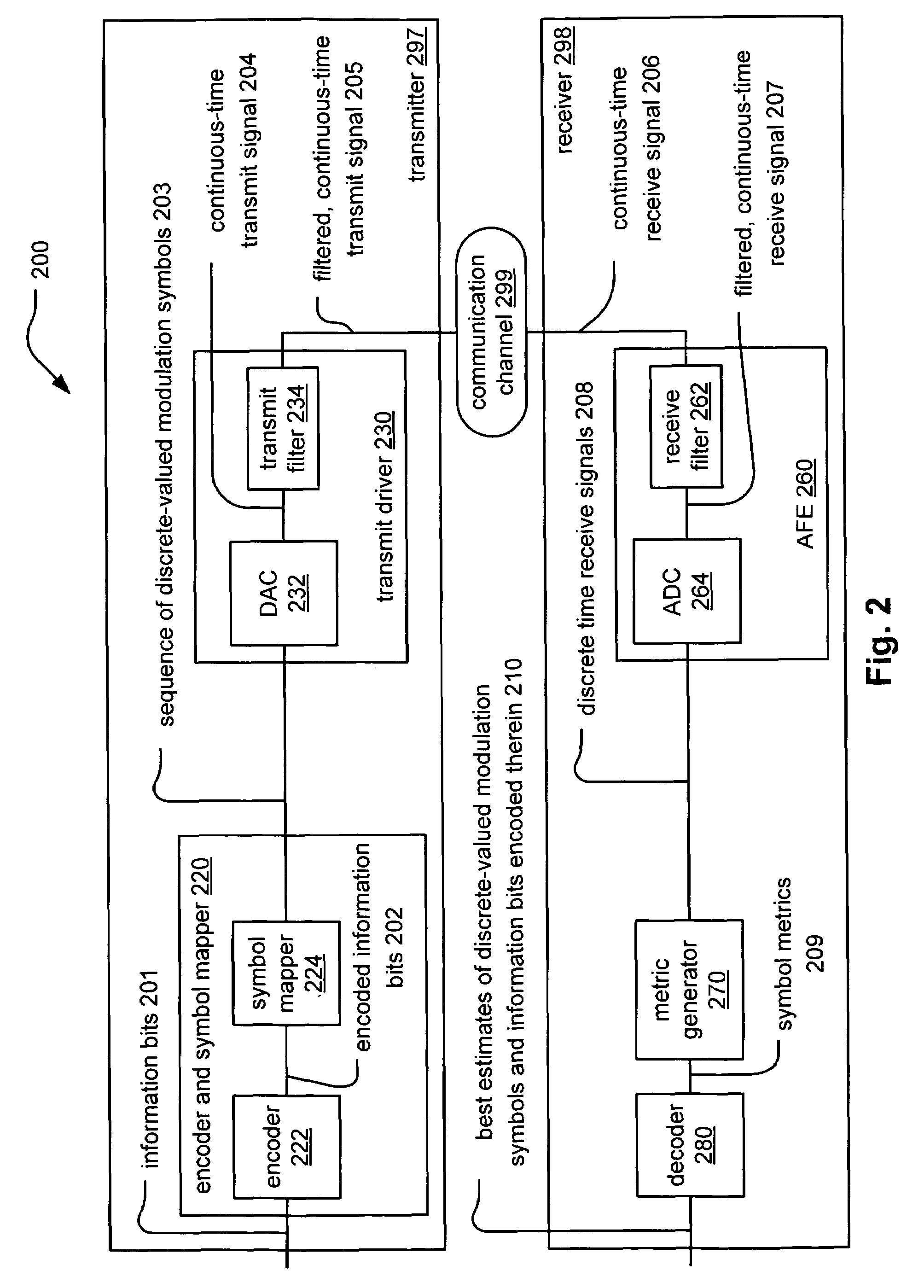Algebraic construction of LDPC (Low Density Parity Check) codes with corresponding parity check matrix having CSI (Cyclic Shifted Identity) sub-matrices
a low density parity check and parity check technology, applied in the field of communication systems, can solve the problems of preventing their use in very high data rate communication system application areas, lack of flexibility presented by this approach to design other types of ldpc codes, and a significant challenge to the design of such ldpc codes and/or communication devices
- Summary
- Abstract
- Description
- Claims
- Application Information
AI Technical Summary
Benefits of technology
Problems solved by technology
Method used
Image
Examples
example 1
[0131]Let q=7 and a=3. Then we have α2=2,α3=6,α4=4,α5=5,α6=1=α0. Thus,
GF*(7)={1,2,3,4,5,6}={,α0,α1,α2,α3,α4,α5} (EQ 10)
[0132]Take γ=α3∈GF*(7), Then we have
αγ=α4,α2γ=α5,α3γ=1=α0,α4γ=α,α5γ=α2 (EQ 11)
[0133]Thus,CSIS(γ)=[000100000010000001100000010000001000](EQ12)
[0134]From this, a low density parity check matrix, H(CGRS), being a function of the GRS code, CGRS, can be defined as follows:
[0135]H(CGRS)=[CSI(c0,0)CSI(c0,1)⋯CSI(c0,n-1)CSI(c1,0)CSI(c1,1)⋯CSI(c1,n-1)⋮⋮⋰⋮CSI(cn-k-1,0)CSI(cn-k-1,1)⋯CSI(cn-k-1,n-1)],
which is a σ(q−1)×ρ(q−1) binary matrix with density≦1 / (q−1)2.
[0136]This low density parity check matrix, H(CGRS), therefore defines a corresponding LDPC code, LDPC(CGRS), since
d(β·ci;γ·cj)≧n−1, for i≠j, where β,γ∈GF*(q).
[0137]This LDPC code, LDPC(CGRS), can be employed within any of a wide variety of communication systems that employ error correcting coding. No two rows in the low density parity check matrix, H(CGRS), have more than 1 component in common. Because of ...
example 2
[0254]Let q=109,ρ=18 and θ=6. Then an irregular LDPC code C108 can be constructed by a 648×1944 matrix consisting of 108 distinct 108×108 CSI sub-matrices. The matrix H2 has the form of (EQ 26). The code has maximum bit degree. 6 and maximum check degree 18. Using the density evolution theorem given in the following reference [4], we choose the distribution of degree in H1 being 327 columns with weight 6 (i.e., bits with degree 6) and 972 columns with weight 4 (i.e., bits with degree 4).
[0255][4]“Joint proposal for LDPC Codes,” Hughes Network System, ST Microelectronics and Texas Instrument, WWiSE Advanced Coding “Ad hoc” meeting, May 6, 2005.
[0256]Then by Proposition 4, this irregular code has minimum distance at least 5. All the checks have the same degree, i.e. 11. The following table shows the construction of the parity check matrix H of the LDPC code C108.
[0257]The table consists of 108 entries. Every entry represents a 108×108 sub-matrix, where an actual number in the entry lo...
PUM
 Login to View More
Login to View More Abstract
Description
Claims
Application Information
 Login to View More
Login to View More - R&D
- Intellectual Property
- Life Sciences
- Materials
- Tech Scout
- Unparalleled Data Quality
- Higher Quality Content
- 60% Fewer Hallucinations
Browse by: Latest US Patents, China's latest patents, Technical Efficacy Thesaurus, Application Domain, Technology Topic, Popular Technical Reports.
© 2025 PatSnap. All rights reserved.Legal|Privacy policy|Modern Slavery Act Transparency Statement|Sitemap|About US| Contact US: help@patsnap.com



